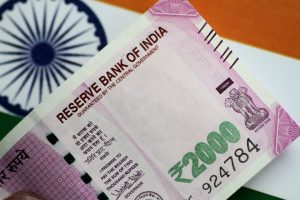The Indian rupee will finish the year down more than 10%, marking its worst performance since 2013.

DECEMBER 30 (Reuters) – One of the worst-performing Asian currencies in 2022 was the Indian rupee, which saw its value decrease by 10.14 percent, the most since 2013 as the dollar soared as a result of the U.S. Federal Reserve’s hawkish monetary policy approach intended to contain inflation.
The dollar index was on track to post its highest annual increase since 2015, while the rupee ended the year at 82.72 to the dollar, down from 74.33 at the year’s end of 2021.
The Japanese yen, which was expected to end 2022 down more than 12% against the dollar, was the only other Asian currency to decline more than the rupee.
A rise in oil prices brought on by the crisis between Russia and Ukraine also hurt the rupee and resulted in India’s current account deficit reaching an absolute record high in the third quarter of that year.
Market observers anticipate that the rupee will trade with an appreciation bias in 2023 as a result of softening commodity prices and the expectation that foreign investors would continue to purchase Indian shares.
Gains in the rupee are due to speculators’ speculations and a lack of demand for dollars in cash.
According to Raj Deepak Singh, head of derivatives research at ICICI Securities, “the Fed could maintain rates higher for longer than anticipated and if the slowdown in developed nations turns into a prolonged recession, India’s exports could be seriously hurt.”
In the first quarter, most traders and analysts anticipate that the currency would fluctuate within a narrow 81.50–83.50 range.
According to economists, equity inflows will be a crucial indicator to watch for the rupee for both domestic and foreign investors.
But predicting the direction of share markets has grown difficult, they warned, due to a number of concerns going into 2023, including restrictive monetary policy circumstances, a possible recession in some nations, and ongoing geopolitical strife.
“There will be a time of softer global equity markets. I’ll be less bullish on the rupee if there is a selloff in Indian shares “said Christopher Wong, an OCBC Bank FX strategist.
The South Korean won and the Thai baht are predicted to increase the most next year, but the rupee could still lag its Asian counterparts and not be a top choice in the emerging market complex, according to Wong.










































